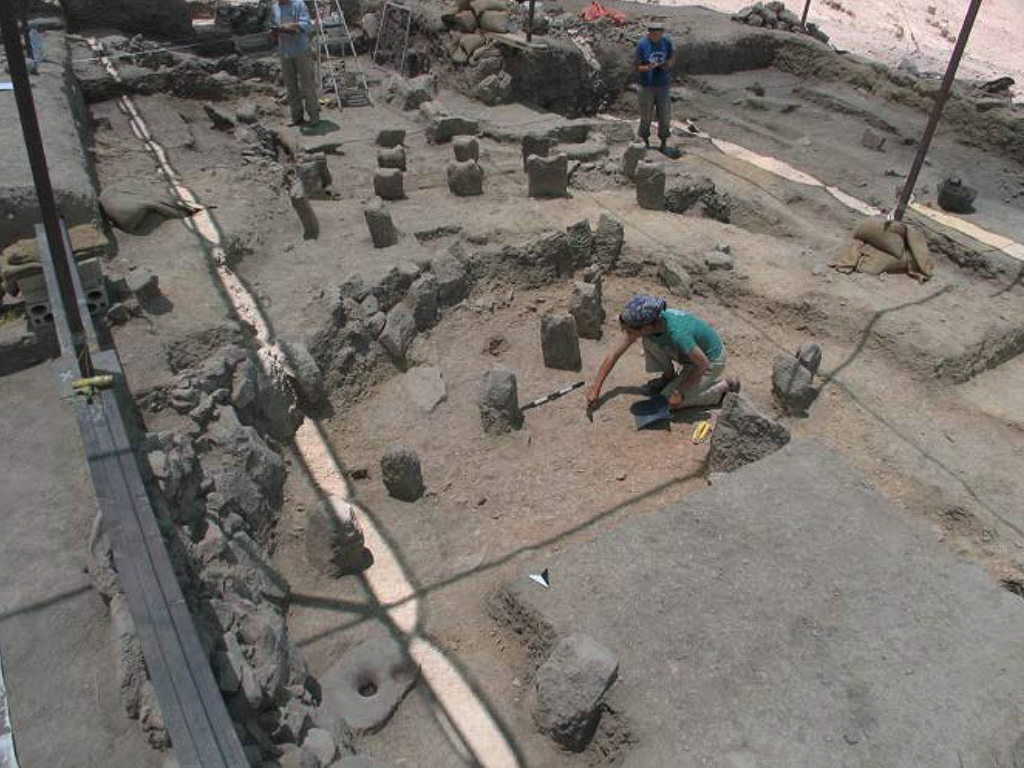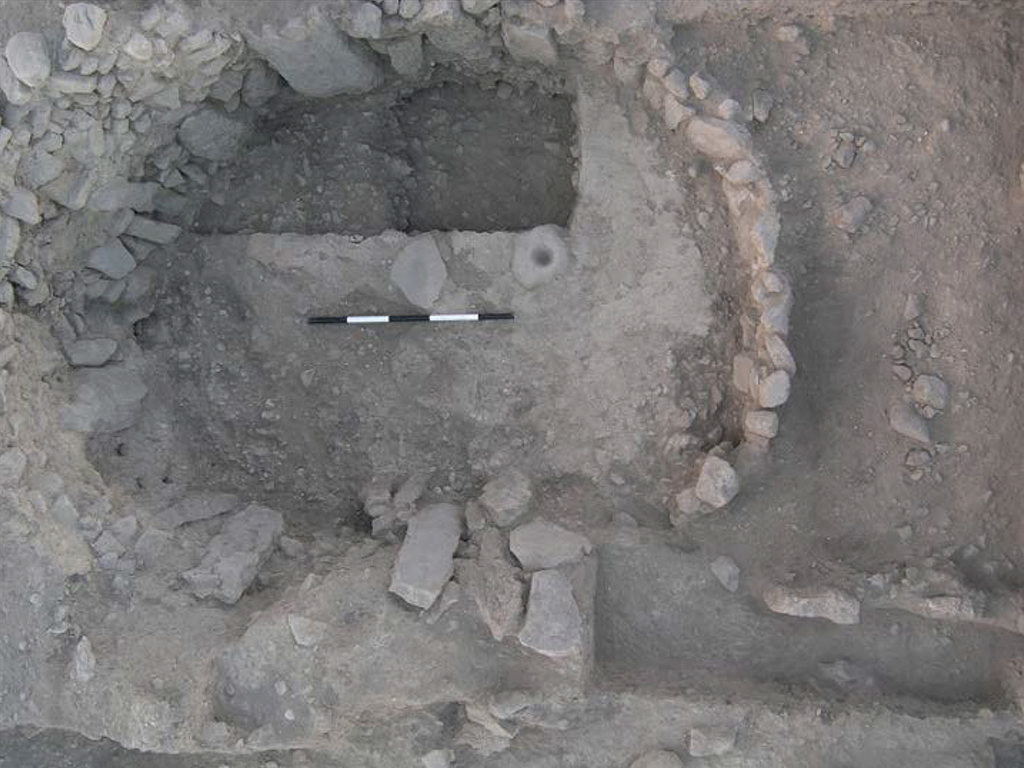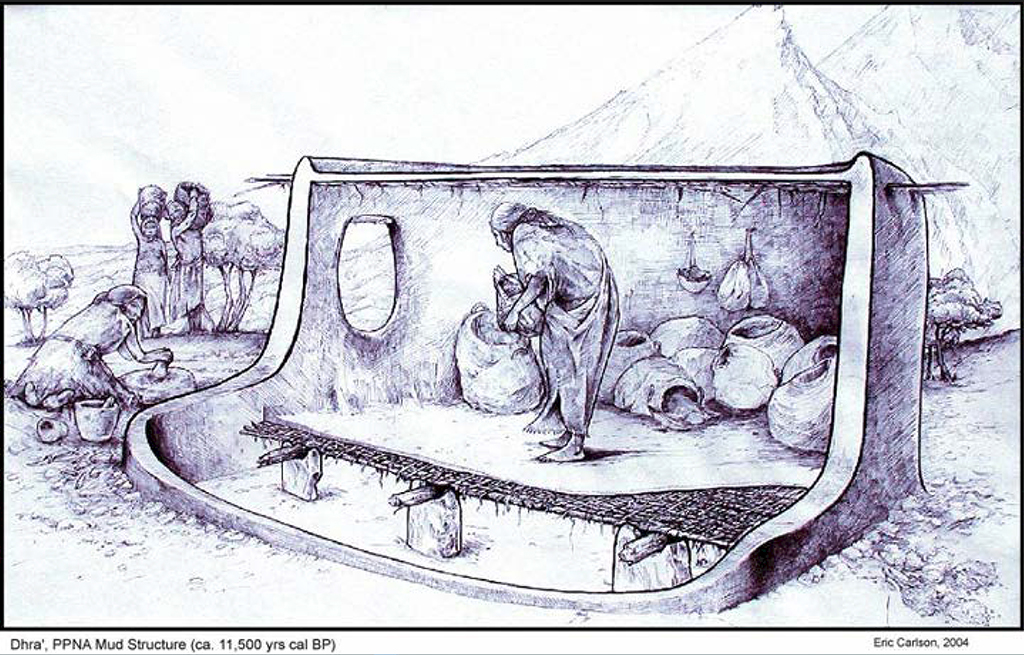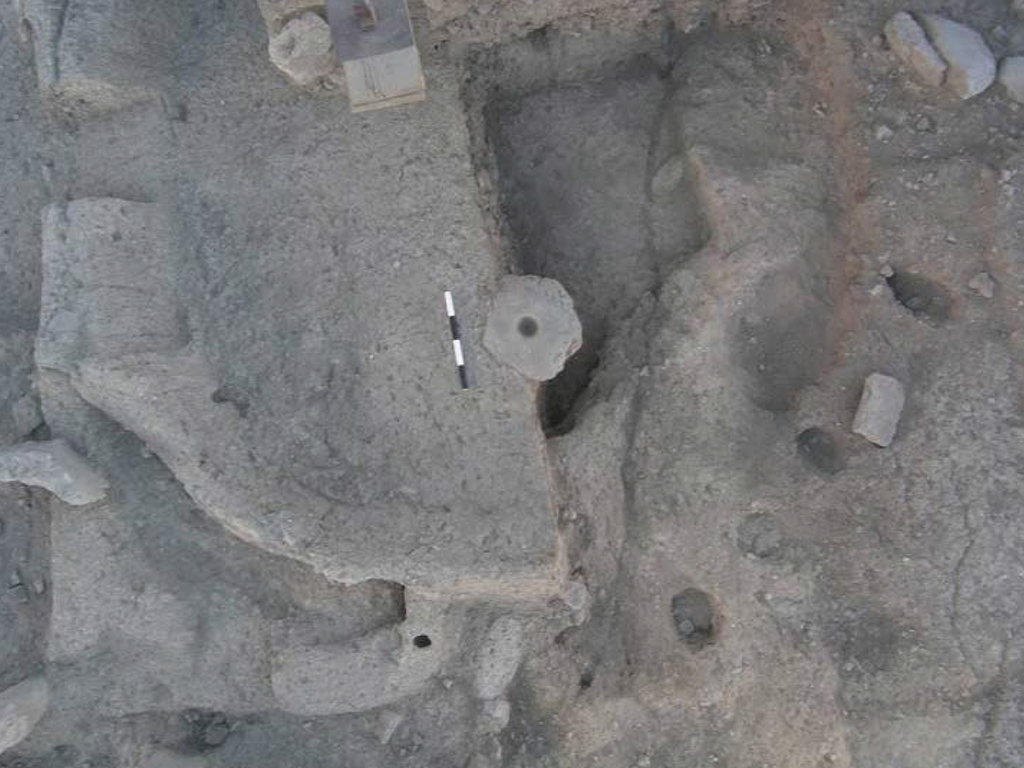Dhra’
Bill Finlayson talking about the Neolithic site of Dhra’
The site of Dhra‘ is located close to the Wadi Kerak at the southern end of the Dead Sea, situated on an alluvial terrace at the base of the cliffs that rise to the Jordanian plateau. The landscape is deeply incised by erosion and wadi channels today, but in the Neolithic was likely an open plain with braided streams flowing across it. It was discovered in the late 1970s and was first reported by Bennett and Raikes in 1980, with small-scale excavations conducted in 1995 by Kuijt and Mahasneh. Large-scale excavations were undertaken between 2001 and 2005 by Finlayson and Kuijt.
The site was occupied in the PPNA at around 9500 cal BC, covering an area of approximately one hectare, the largest known PPNA settlement in southern Jordan. Excavation revealed deeply stratified deposits, with three distinctive types of structure. One had stone walls, creating a revetment into the terrace slope with a high wall to the East and a low wall to the west (Photo). One of these structures was cut into a large midden deposit as during the PPNA refuse appears to have been dumped on site, creating soft deposits that were easy to dig into. These structures are interpreted as residential in character. A second form of structure was built with pise walls, and a mud floor suspended above the ground on rafters resting on stone uprights (Photo). Raising the floors would have protected materials stored inside from damp and the mice that were settling down with people. The presence of substantial quantities of cereal phytoliths on the floor indicate these structures are likely to have been granaries. Barley appears to have been cultivated at Dhra’, with evidence of ‘semi-domestication’ following an intensification of production. The third type of structure was made with mud-plaster floors and light wattle and daub screen walls, and a roof held up in a ring of posts. Mortars and cutting slabs set in the floors suggest that these buildings were for food processing. The open and public food storage and processing buildings has suggested that these were communal facilities, designed to assist enforcement of sharing of new crop resources. Vast quantities of flint were recovered from the site, much of it thrown onto a flint dump in a very fresh, unused condition.
The site was occupied again in the Pottery Neolithic (c. 6000 cal BC), with rectangular buildings, ceramics and pits cut into the underlying PPNA occupation. Apparently contemporary with this occupation are the remains of check dams in the immediately adjacent wadi, presumably designed to hold the soil and water in place in a period just before downcutting began. The off-site soil profile contains a scatter of Pottery Neolithic artefacts, suggesting that rubbish was being spread on the fields to maintain fertility. That, and the soil management, illustrates the development of farming that was continuing at this time.
References
Bennett, C.-M. 1980. Soundings at Dhra‘, Jordan. Levant XII: 30–39.
Colledge, S., Conolly, J., Finlayson, B. and Kuijt, I. 2018 New insights on plant domestication, production intensification, and food storage: the archaeobotanical evidence from PPNA Dhra‘, Levant DOI 10.1080/00758914.2018.1424746
Finlayson, B., Kuijt, I. and Goodale, N. B. 2002. Results from the 2001 excavations at Dhra‘ Jordan: chipped stone technology, typology, and intra-assemblage variability. Paléorient 28(1): 125–40.
Finlayson, B., Kuijt, I., Arpin, T., Chesson, M., Dennis, S., Goodale, N., Kadowski, S., Maher, L., Smith, S., Schurr, M. and McKay, J. 2003. Dhra‘, Excavation Project, 2002 interim report. Levant 35: 1–38.
Finlayson, B. and Kuijt, I. 2006. Dhra‘ Excavation Project 2005. Bulletin for the Council for British Research in the Levant 1: 24–25.
Kuijt, I. 2001. Lithic inter-assemblage variability and culture-historical sequences: a consideration of the Pre-Pottery Neolithic A occu- pation of Dhra‘, Jordan. Paléorient 1: 107–25.
Kuijt, I. and Finlayson, B. 2001. Excavation season at the Pre-Pottery Neolithic A period settlement of Dhra‘, Jordan: preliminary results. Neo-Lithics 2(01): 12–15.
Kuijt, I., Finlayson, B. and MacKay, J. 2007. Pottery Neolithic land- scape modification at Dhra‘. Antiquity 81: 106–18.
Kuijt, I. and Finlayson, B. 2009. Evidence for storage and predomestica- tion granaries 11,000 years ago in the Jordan Valley. Proceedings of the National Academy of Sciences 106(27): 10966–70.
Kujit, I., and Mahasneh, H. 1998. Dhra’: An early Neolithic village in the southern Jordan Valley. Journal of Field Archaeology 25(2): 153–161.
Raikes, T. D. 1980. Notes on some Neolithic and later sites in the Wadi Araba and the Dead Sea Valley. Levant XII: 40–60.

image 1 caption

image 2 caption

image 3 caption

image 4 caption
